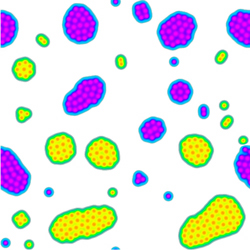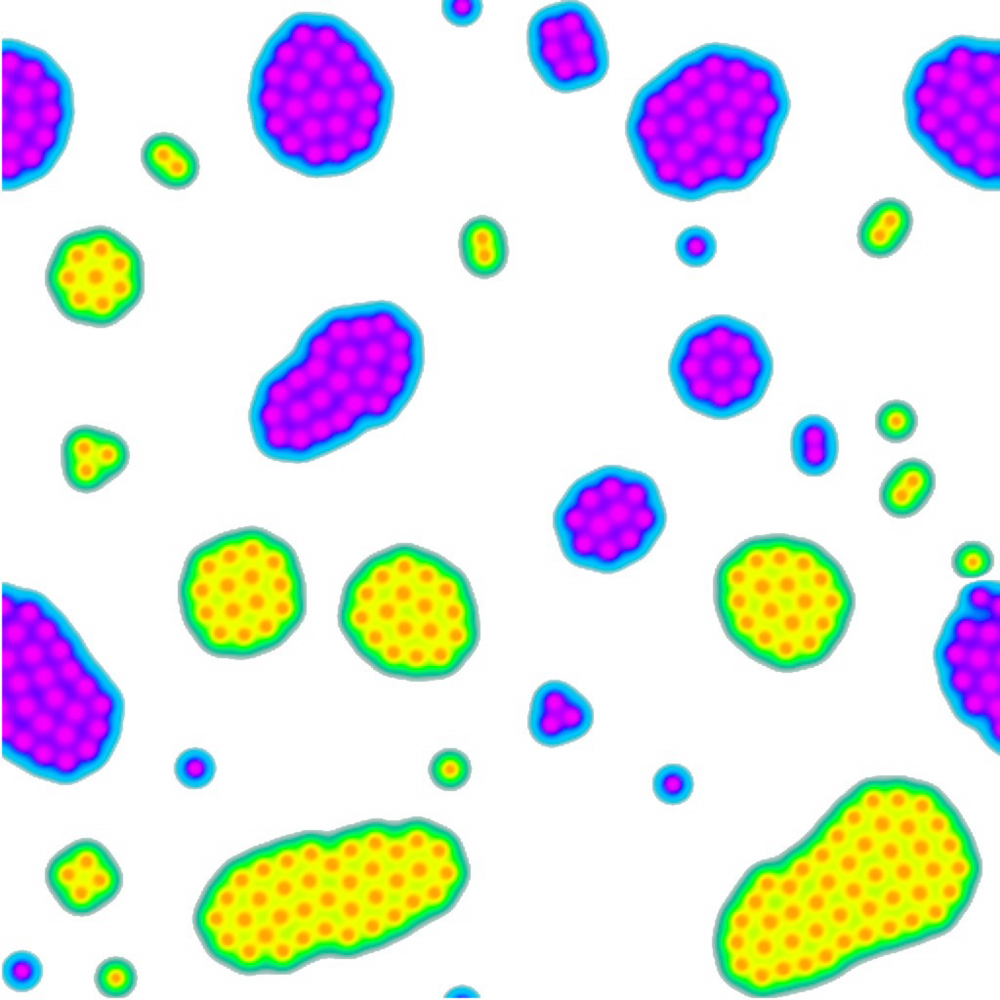A Super Mix Inside Neutron Stars
Neutron stars may harbor a mixture of two exotic states of matter–both a superconductor and a superfluid may reside in their cores. Calculations reported in the July Physical Review B show that this combination may react differently to magnetic fields than any earthly superconductors do–neither totally excluding the fields nor letting them penetrate in the usual way. This surprising response could affect the rotational motion of a neutron star.
Physicists speculate that in the center of a neutron star–the extremely dense remains of a massive star–neutrons can flow without friction. Such a superfluid state, found also in liquid helium, may explain the observed sudden increases (called glitches) in rotation speeds of neutron stars. As for the smaller number of protons in a neutron star, they too may move without friction, but being charged, their flow corresponds to a resistance-less electric current. This proton superconductor is expected to act like more common superconductors based on electrons. But a point of ongoing debate is how the superconducting region will respond to the star’s intense magnetic field. Will it act like a type-I superconductor and force magnetic fields to go around it? Or will it behave like a type-II superconductor and let fields penetrate through millions of tiny holes, called “flux tubes”? Ordinarily the choice is determined by the value of κ, a parameter that describes the collective response of the charge carriers to magnetic fields.*
To answer the question, researchers cannot look at the superconductor in isolation but must address how the proton superconductor interacts with the neutron superfluid, write Mark Alford and Gerald Good of Washington University in St. Louis. Although one other team has studied some of the interaction’s effects on the superconductor [1] they didn’t look at how different couplings between the two states would affect the behavior.
Alford and Good calculated the properties of a generalized superconductor-superfluid combination, allowing for two types of interaction: one resembling a static electric force and the other resembling a magnetic force. Instead of assigning strengths to these forces, the theorists looked at the consequences of various strengths, both attractive and repulsive.
As with ordinary superconductors, the researchers found that their superconductor could be either type I or type II, depending on whether κ was much smaller or much larger than a critical value. But surprisingly, for intermediate values of κ, they found a series of new states. These states had flux tubes as in the type-II case, but the amount of magnetic field in each tube was an exact multiple of the usual value–twice, three times, and much higher multiples. If you started with a type-II superconductor and gradually decreased κ, you would see normal flux tubes coalescing to make these intermediate-size tubes. Eventually they would all collapse into one big tube–a non-superconducting region–as the material around it became type I, Alford explains.
“The paper of Alford and Good demonstrates that there is a breakdown in the type-I/type-II dichotomy,” says Egor Babaev of the University of Massachusetts at Amherst. In 2005 he and a colleague found a similar breakdown when they studied a mixture of two separate superconductors [2]. In that case, however, the flux tubes did not fuse, but instead formed conglomerations of type-II-like tubes. Interestingly, Marcelo Gleiser and his team at Dartmouth College in Hanover, New Hampshire, have used Alford and Good’s calculations in their own simulations. What they found (still unpublished) looks a lot like Babaev’s flux tube conglomerations. Even so, Gleiser says, “our simulations seem to confirm the results of Alford and Good in that we see the rich predicted behavior in the type-I/type-II boundary.”
Creating a superconductor-superfluid in the laboratory to confirm this behavior may not happen any time soon, says Babaev. But he thinks further theoretical work may lead to a signature for these new phenomena in the stars’ rotational dynamics.
* κ is defined as the depth to which magnetic fields can penetrate divided by the length over which the material can change from superconducting to non-superconducting. In conventional superconductors, κ > 1/√2 implies type-II superconductivity, while κ < 1/√2 implies type-I.
–Michael Schirber
Michael Schirber is a Corresponding Editor for Physics Magazine based in Lyon, France.
References
- K. B. W. Buckley, M. A. Metlitski, and A. R. Zhitnitsky, “Neutron Stars as Type-I Superconductors,” Phys. Rev. Lett. 92, 151102 (2004)
- E. Babaev and M. Speight, “Semi-Meissner State and Neither Type-I nor Type-II Superconductivity in Multicomponent Superconductors,” Phys. Rev. B 72, 180502(R) (2005)
More Information
Focus story from 1999: Neutron Star’s Glitch is Physicists’ Gain





